Mar 21, 2013 | art fairs, installation, sculpture
From within a plain framed canvas sticks a nail, and atop it stands a matching silver bug, holding some kind of weight across its shoulders. Existing somewhere between reality and a Pixar movie, the little silver fellow is given character, a purpose, and the ability to walk on two legs. The nail he balances upon isn’t in the center of the canvas either, it’s just off to the side, and the little bug walks towards the wide ocean of white as if he were unaware of the inability to travel through physical matter.
But that doesn’t matter anyways, because in this artwork he’s frozen in time, and as if there were three different suns, three of his shadows stretch out from where the nail meets the canvas – two drawn on with pencil and a third that is an actual shadow, created by the lights above booth 2.11 at VOLTA NY.
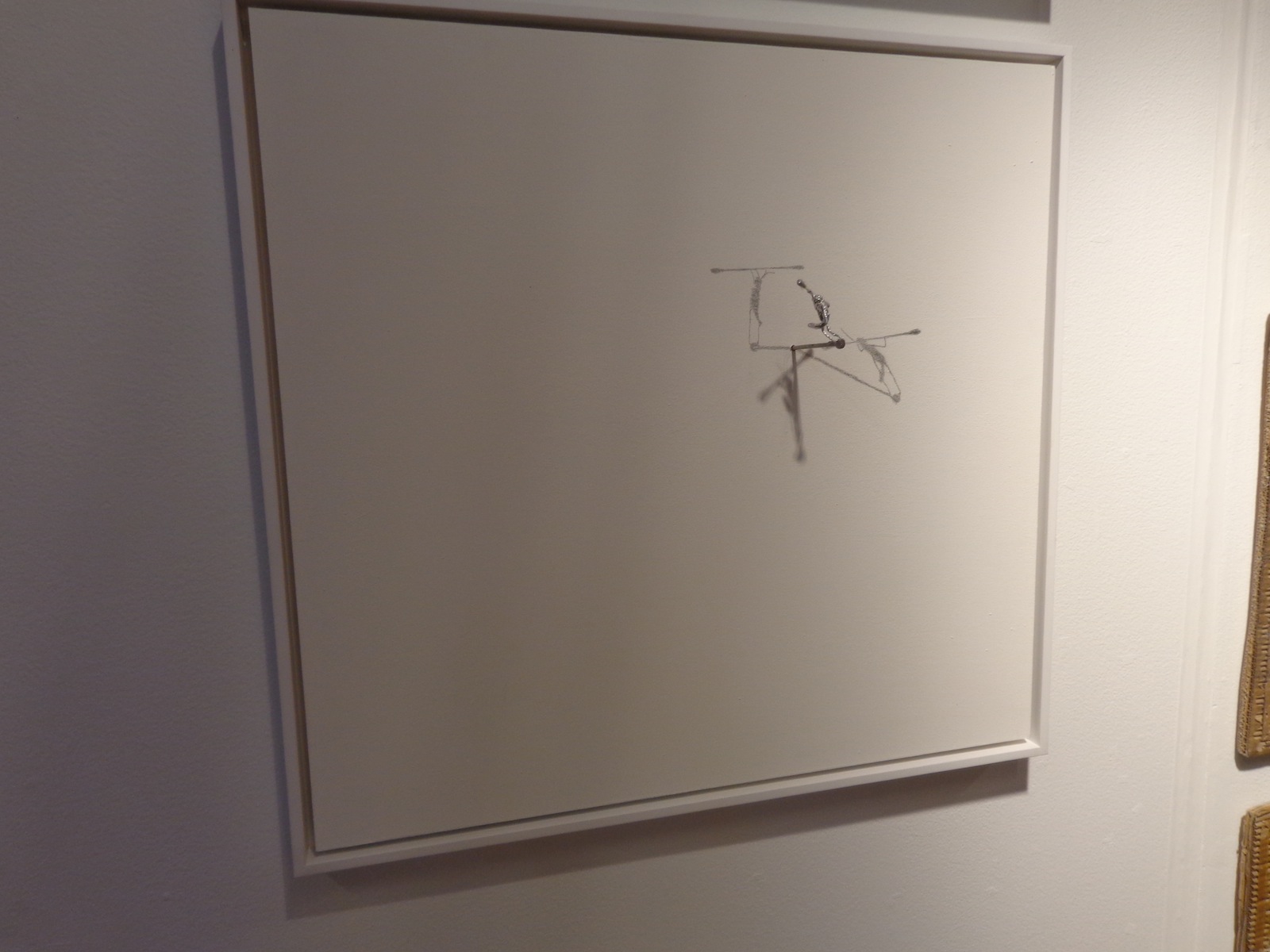
A work by Colombian artist Sebastian Mejia, the strong little bug was echoed throughout the artist’s booth at the fair, sometimes framed on portable canvas like this one and other times just nailed right into the wall with shadows drawn temporarily. And even though the bug would have squashed if it were alive and real, the image of something so inconsequential trying so hard at something was adorable and disheartening at the same time, since the task seems so menial and even if the bug did succeed at whatever it was he was working towards, no one would care regardless.
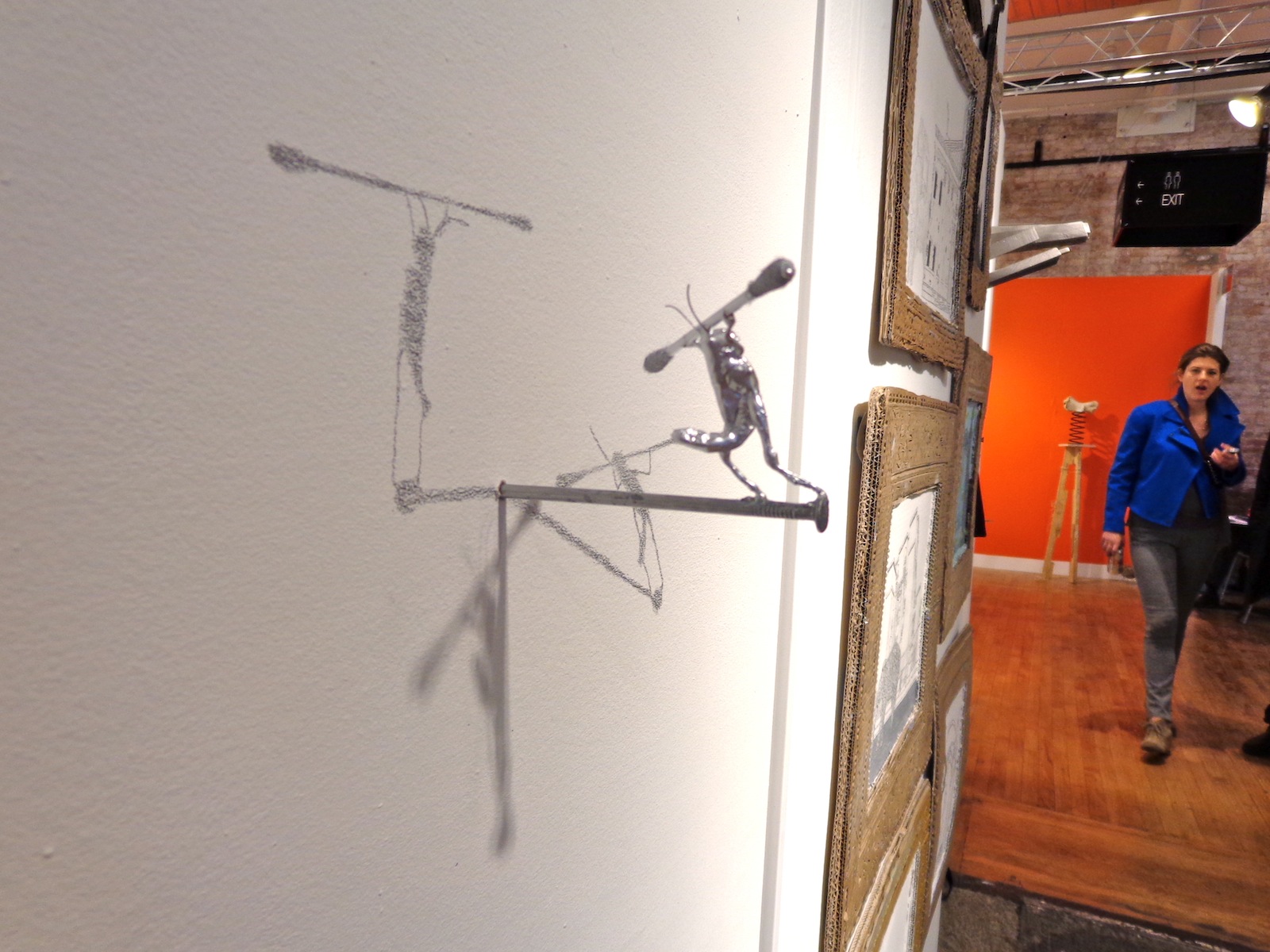
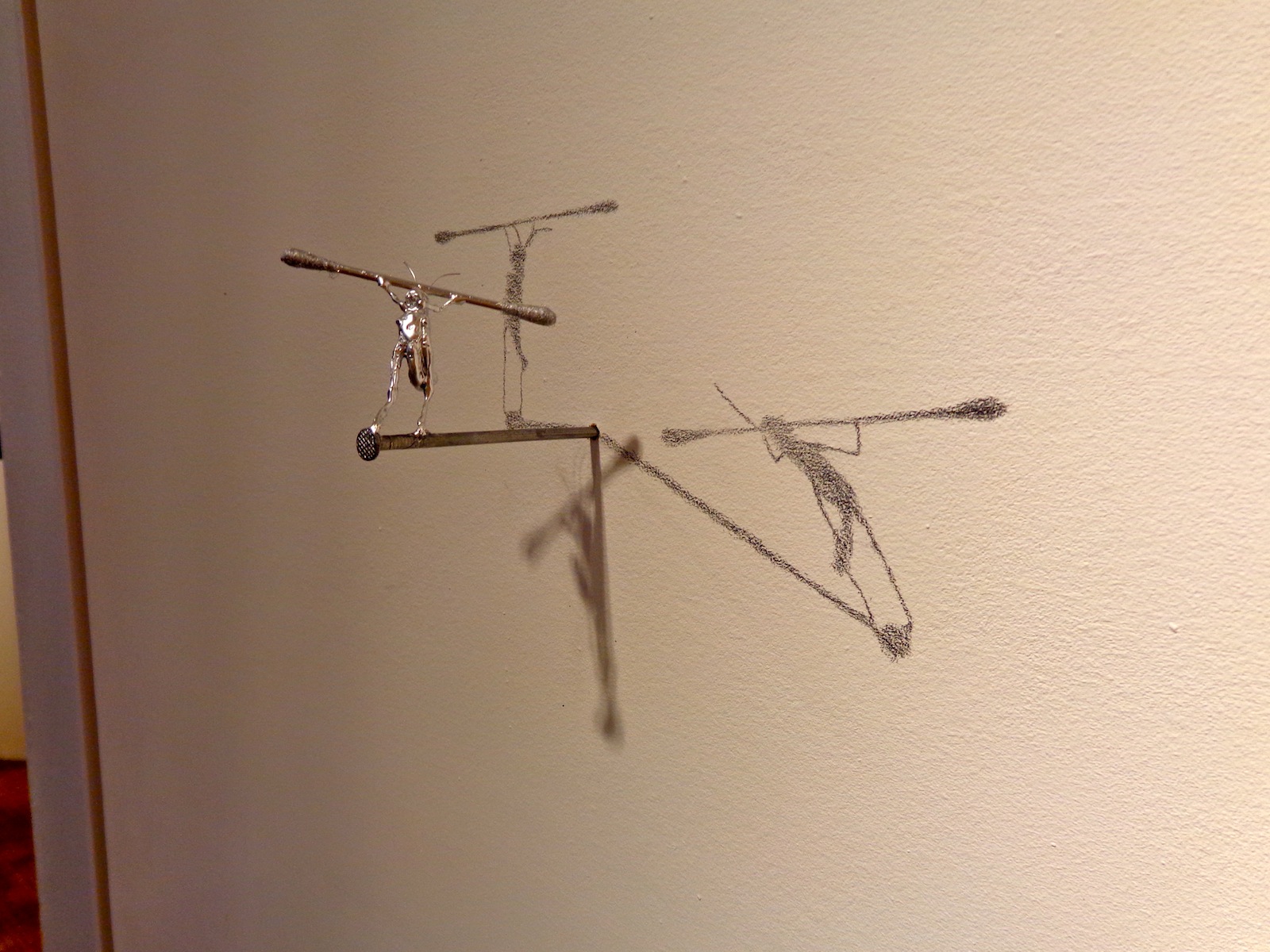
But it’s probably not so much about what he’s trying to do, but about how we perceive what he’s trying to do. He’s immortalized by two carefully drawn shadows, meaning that there are at least four different representations of him in one place – a factor multiplied every time someone takes a photo. He’s strong the way we imagine hardworking insects to be, but he’s silver, and a shinier silver than the nail he balances upon and the q-tip shaped weight he carries across his shoulders. He’s smaller than the disposable pieces of cotton we use to clean our ears, but he’ll survive much longer and be remembered for much more.
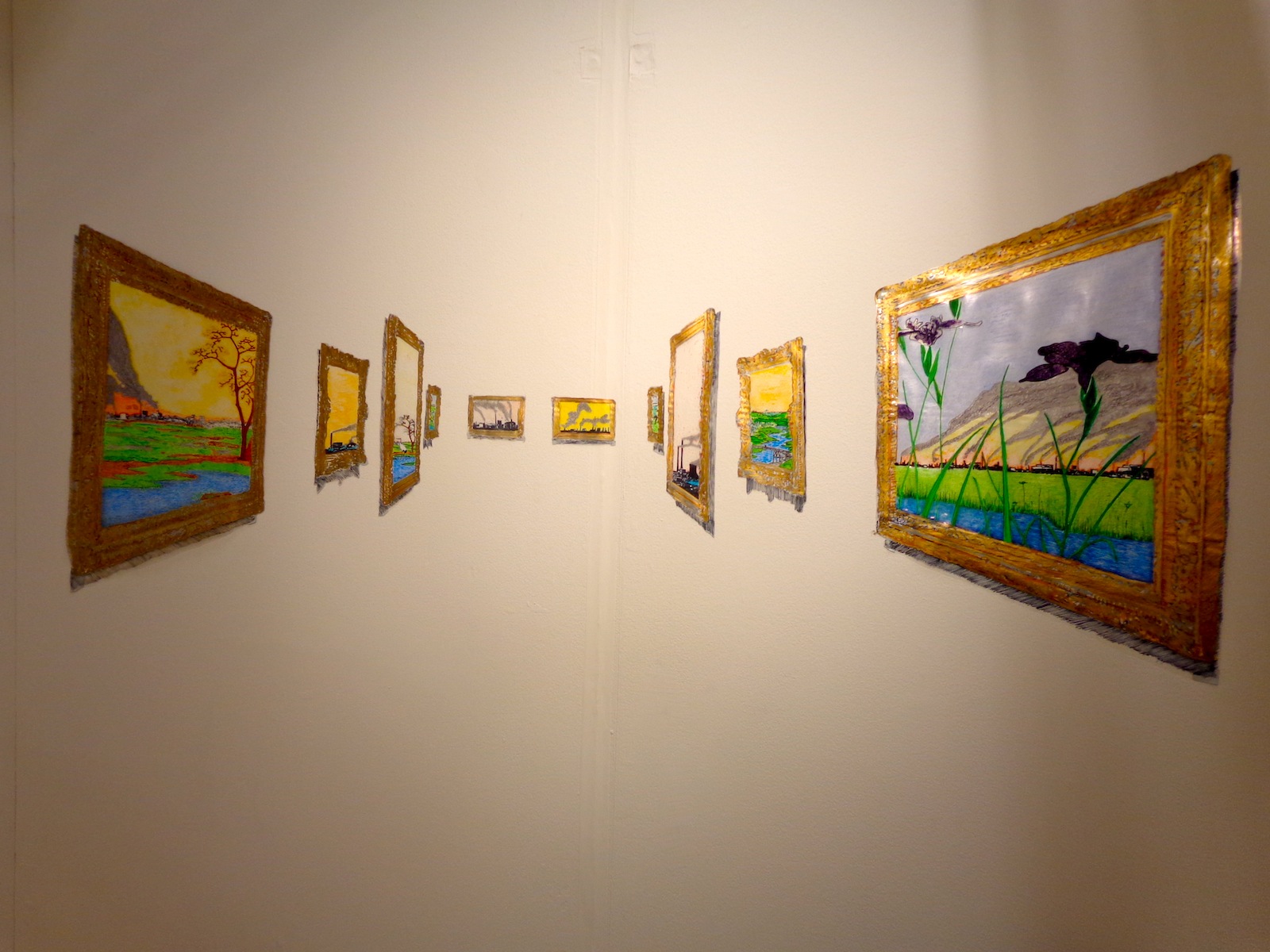
It’s hard to fully appreciate this one in two-dimensions, although it is very much a two-dimensional work. Works of art framed in shiny gold appear to stretch back into the distance, but everything is actually made of something shiny and plastic, even the fading black shadows scrawled beneath each work. The trains within the paintings that look farthest away are just as close to you as anything else, they’re just smaller.
Shadowed wall drawings come from a cracked pedestal on which an ancient statue should stand – the floor and walls both filled in with gray to become the silhouettes of something nonexistent but expected. Sebastian’s whole booth, titled “Sombras Nada Mas” or “Shades Nothing More,” created a game between your brain and your eyes, as each piece forced a recognition of what was represented and what was really there.
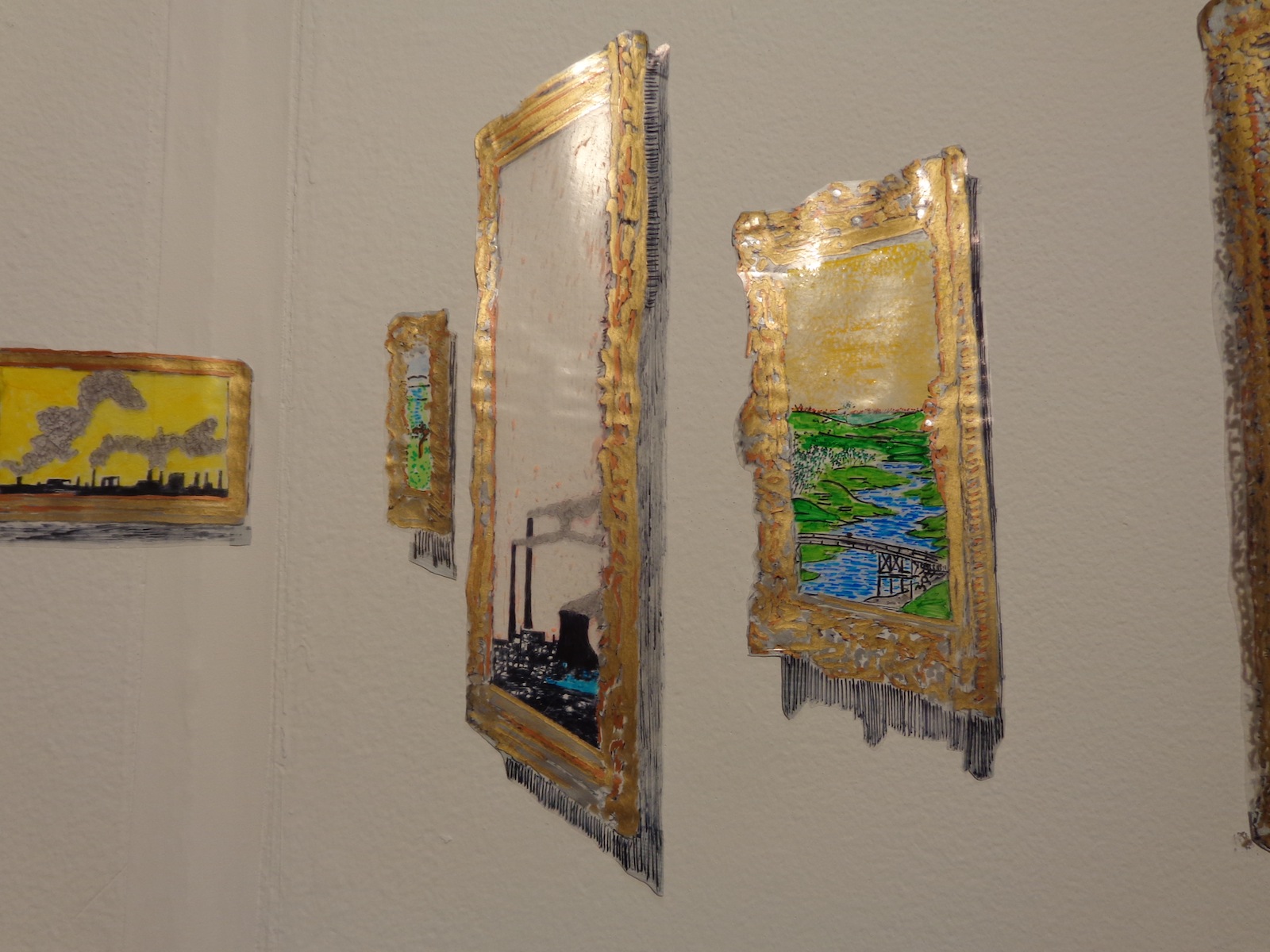
Sebastian Mejia was represented at VOLTA by balzerARTprojects in Basel, Switzerland. According to his artist statement at the fair, his work “focuses upon the dissemination of visual information in different cultures.” He uses his work to examine the differences in symbolism between European and Latin American cultures, but all with a heavy-handed sense of comic relief to lighten the mood.
“Mejia’s work is an epistemological enquiry into the nature of knowledge, how it is acquired, presented, and how it can be retained, communicated, and implemented… Based on the ‘Allegory of the Cave,’ Mejia argues that language is a mere shadow of reality. Translated into the ‘visual,’ shadows of objects cannot represent reality of forms – truth must be experienced rather than told as language fails to convey belief. As ephemeral as his work seems at first sight, they are also about monumental historical and intellectual concepts, such as cultural interactivity, lightness, and adaptation.”
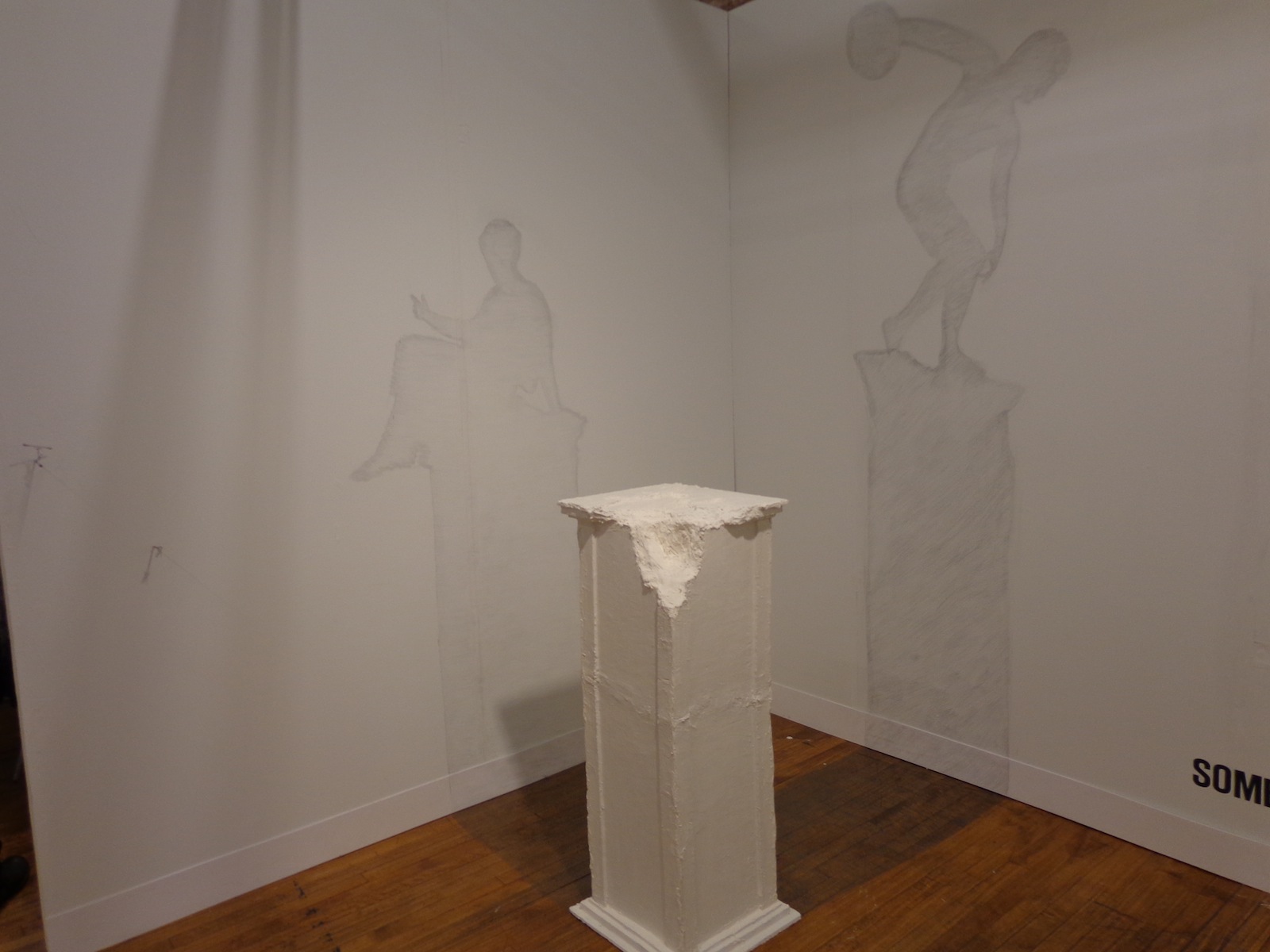
For more of Sebastian’s work, see his website – on the homepage there’s a pretty interesting video of the artist reading a book about Vasari in a library.
Mar 15, 2013 | art fairs, features
VOLTA NY is a showcase of individual minds and hands – hands that painted, sculpted, collaged, and sewed something incredible to be here. It’s held annually in both New York and Switzerland, and last week it took up two stories of 82MERCER in SoHo, and more than 22,000 people showed up.
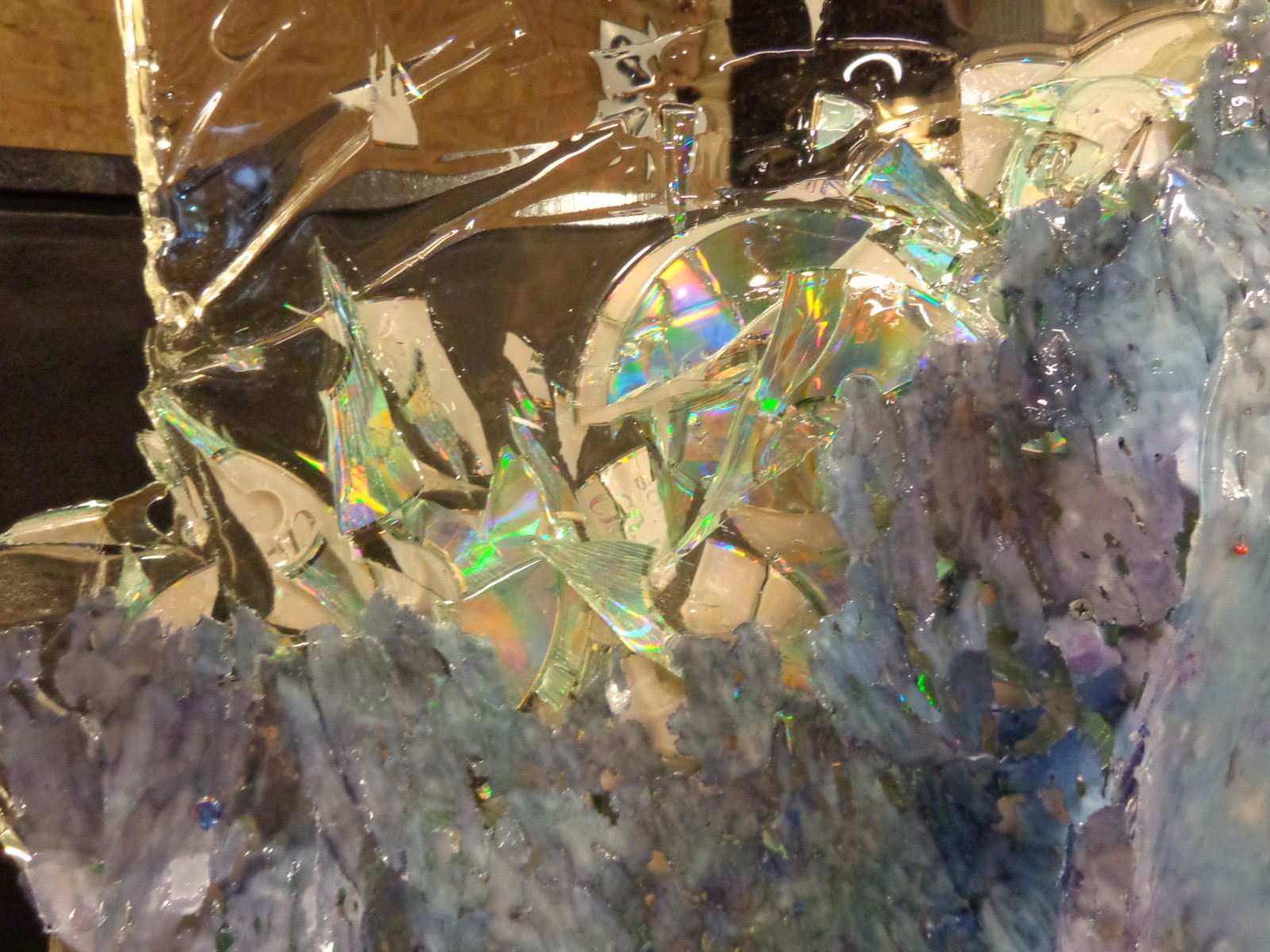
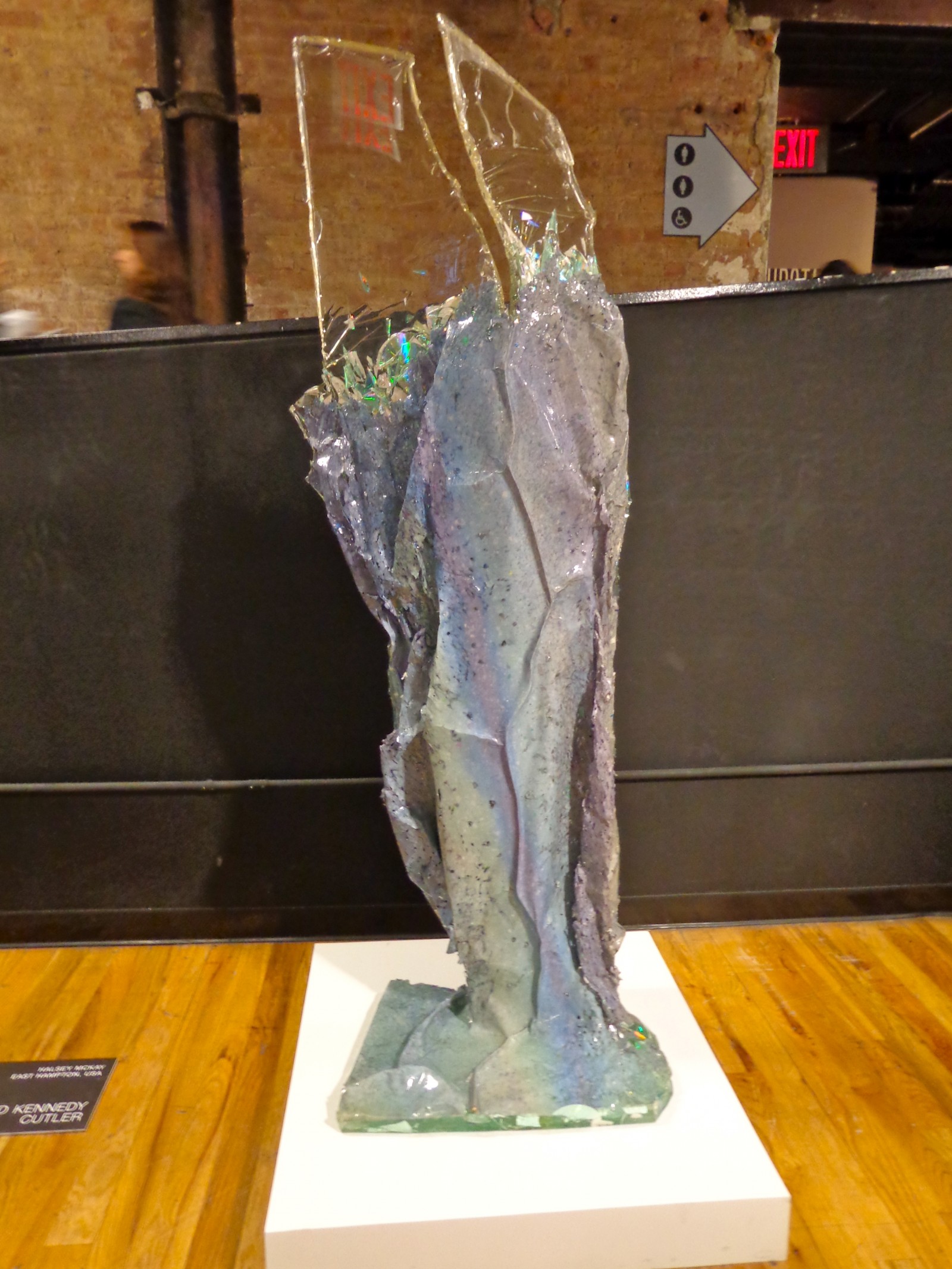
David Kennedy Cutler, represented by Halsey McKay, East Hampton.
The show’s design lead you around through two rows of art per room, and even though it was a bit cramped when tons of people showed up, the art took up most of the space, and the artists were sometimes there to greet you and discuss their work which is very exciting but also kind of nerve-wracking David Kennedy Cutler’s sculpture stood right in the fair’s halfway point, greeting visitors as they walked towards the stairs and up to a whole new level of art – this one with higher ceilings and exposed brick walls.
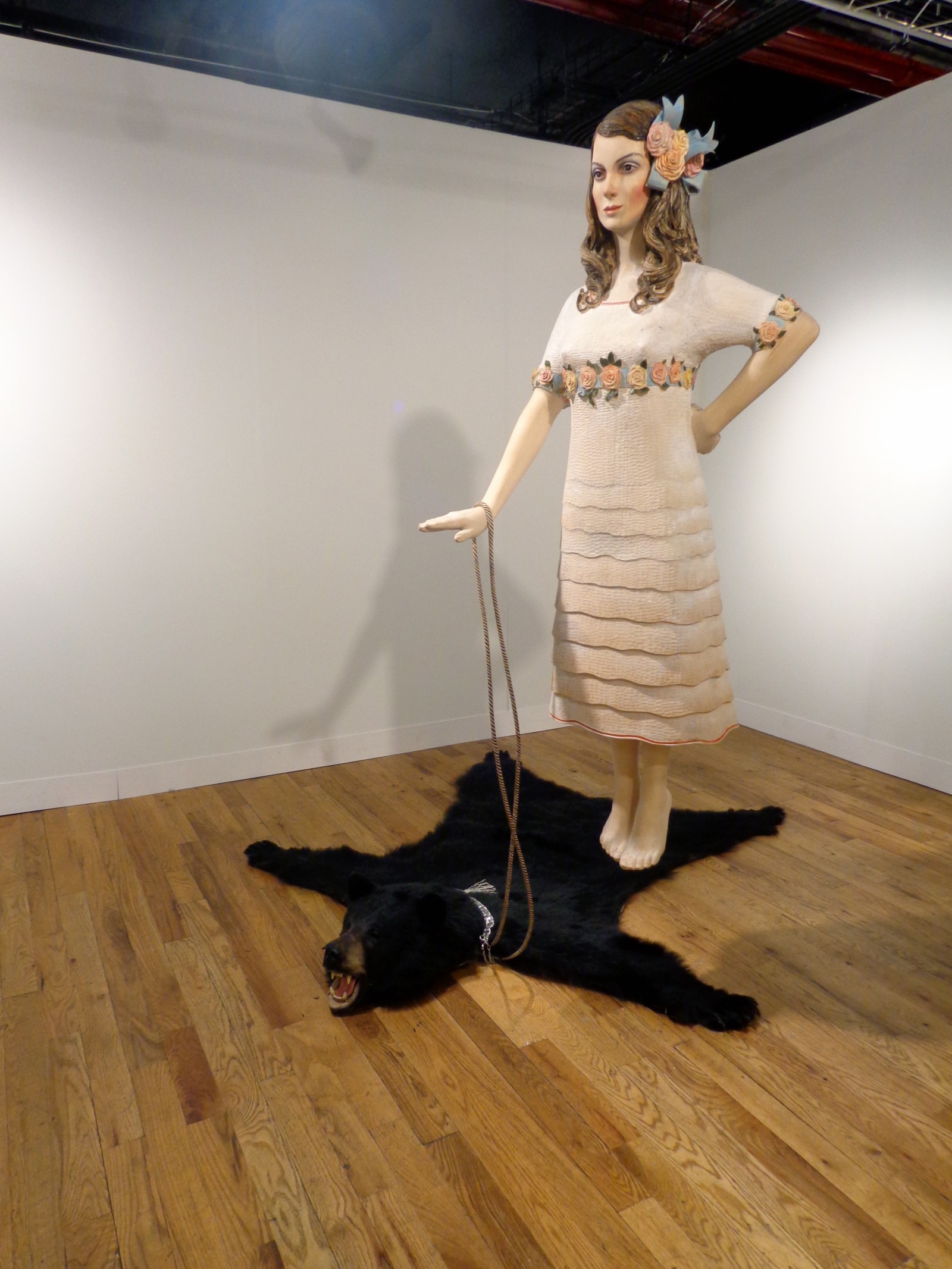
Marc Fromm represented by Jarmuschek + Partner, Berlin.
A whole crowd was gathered around Marc Fromm’s levitating piece – the girl somehow miraculously held up by the seemingly slack rope draped causally around her wrist. The bear and the girl together make for an interesting pair: the bear’s furry face is still somewhat ferocious looking, and even though the flying girl is all dolled up with flowers and everything, there’s hardly any expression behind her empty doll face.
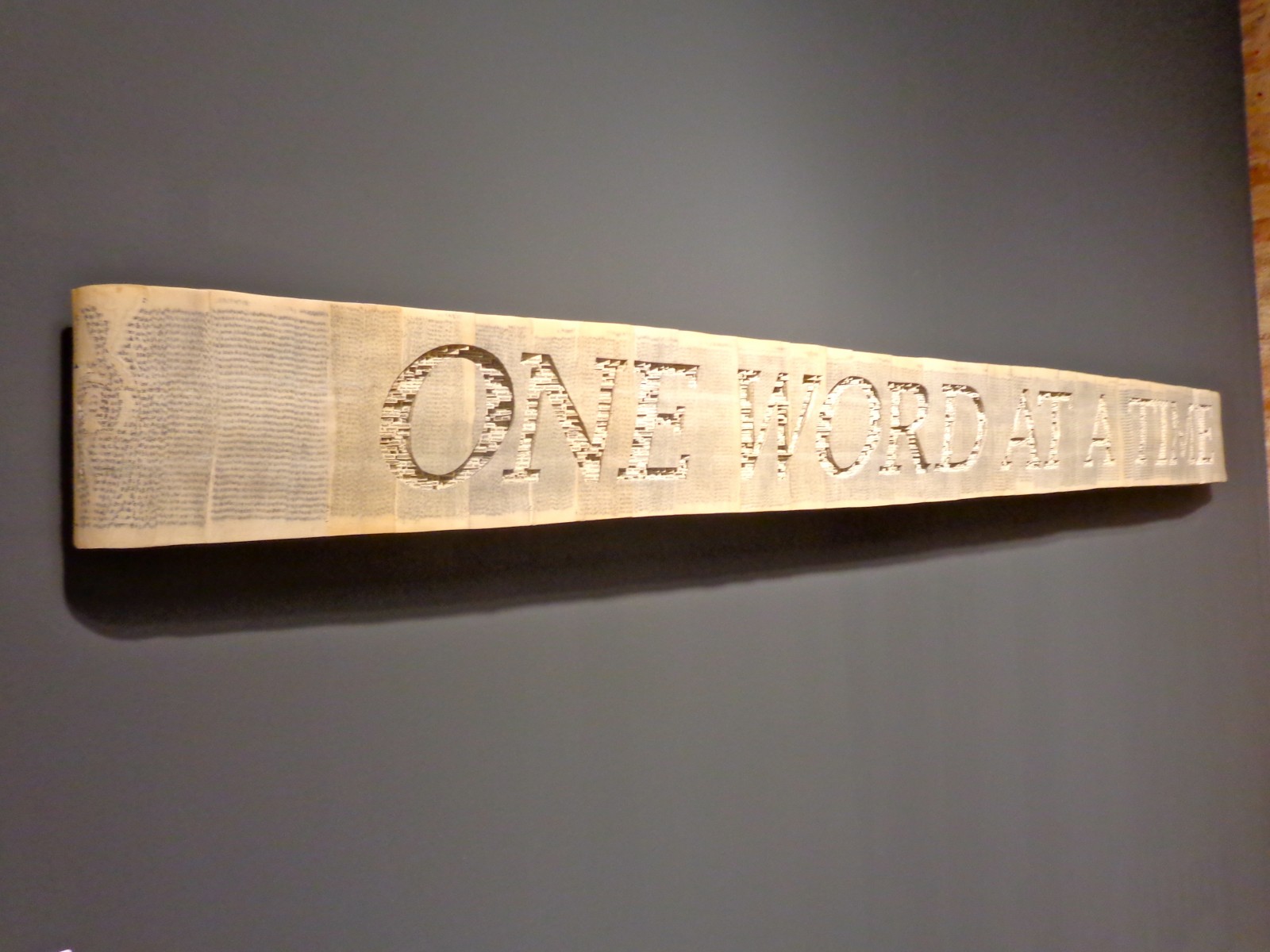
“One Day at a Time,” 2012 (paperback books, acrylic varnish)
by Brian Dettmer represented by Kinz + Tillou, NY
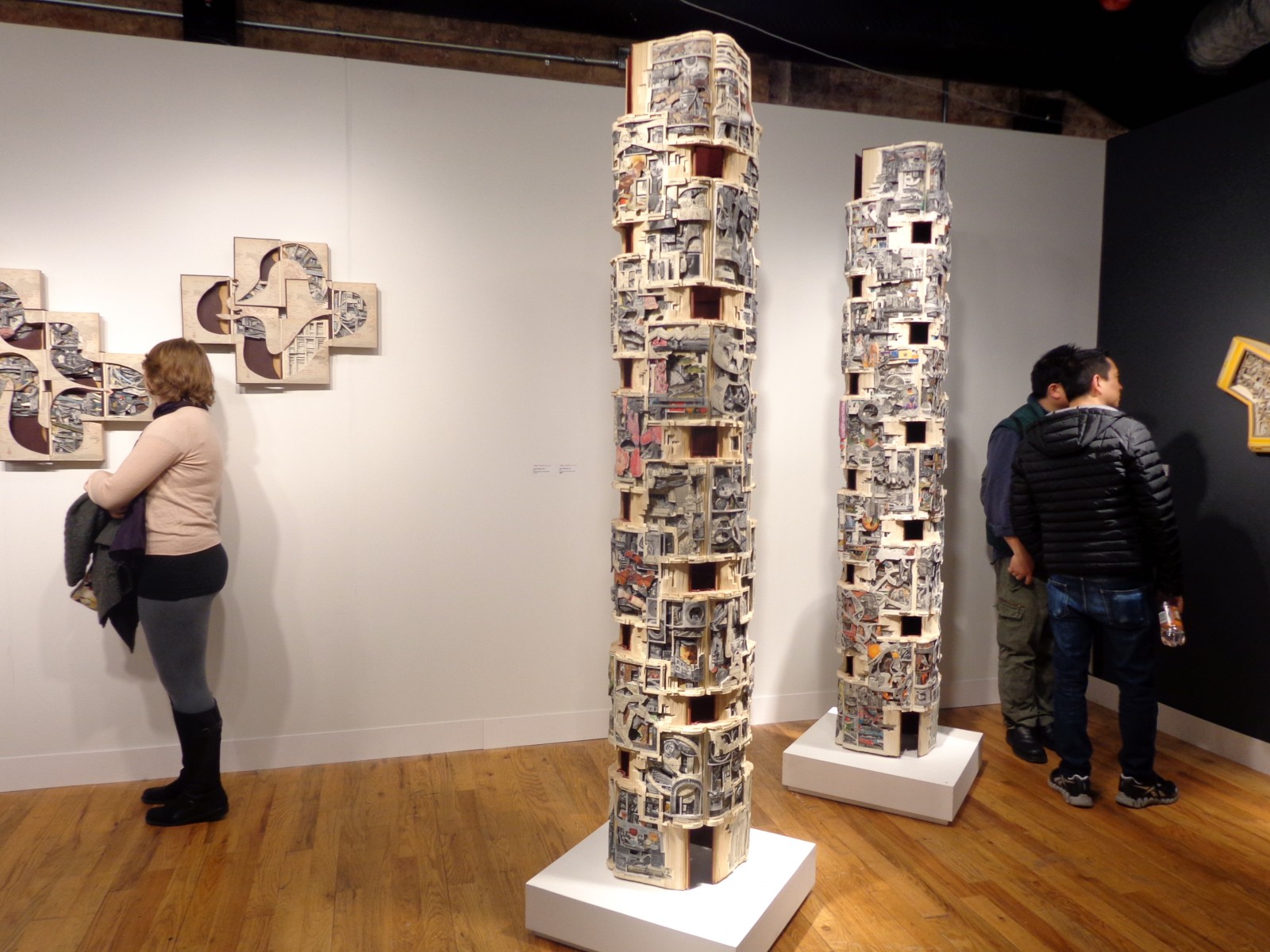
“An Encyclopedia of World History” by by Brian Dettmer
Brian Dettmer’s works appeared the most labor-intensive at VOLTA. His towers and wall sculptures are made from encyclopedias and involved hours of pouring through old books and carefully cutting and rearranging. “One Day at a Time” actually reads ‘One Word At A Time’ with each of the letters carefully filled in with thousands of individually cutout letters.
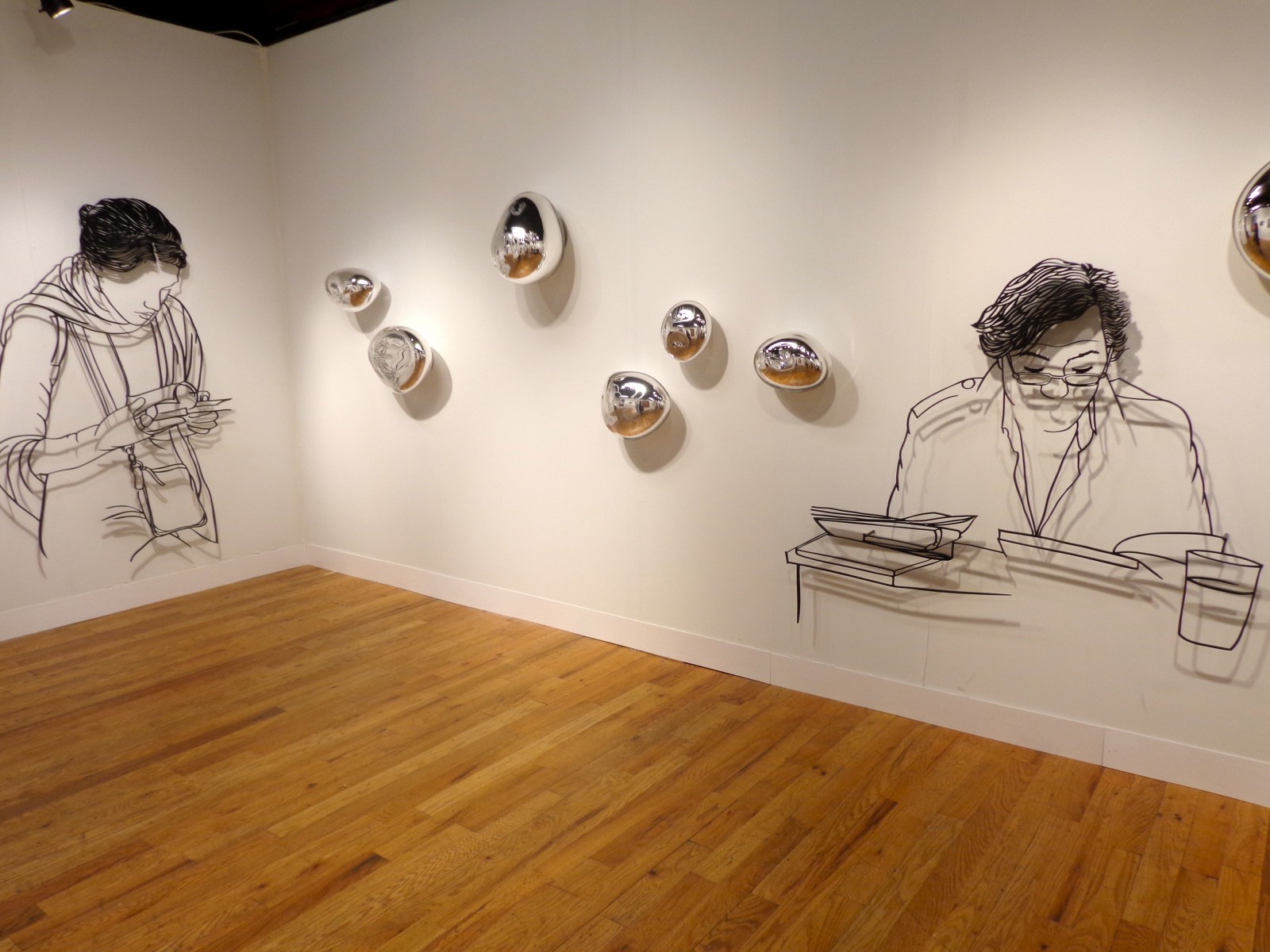
Hae-Sun Hwang represented by Gallery Simon, Seoul
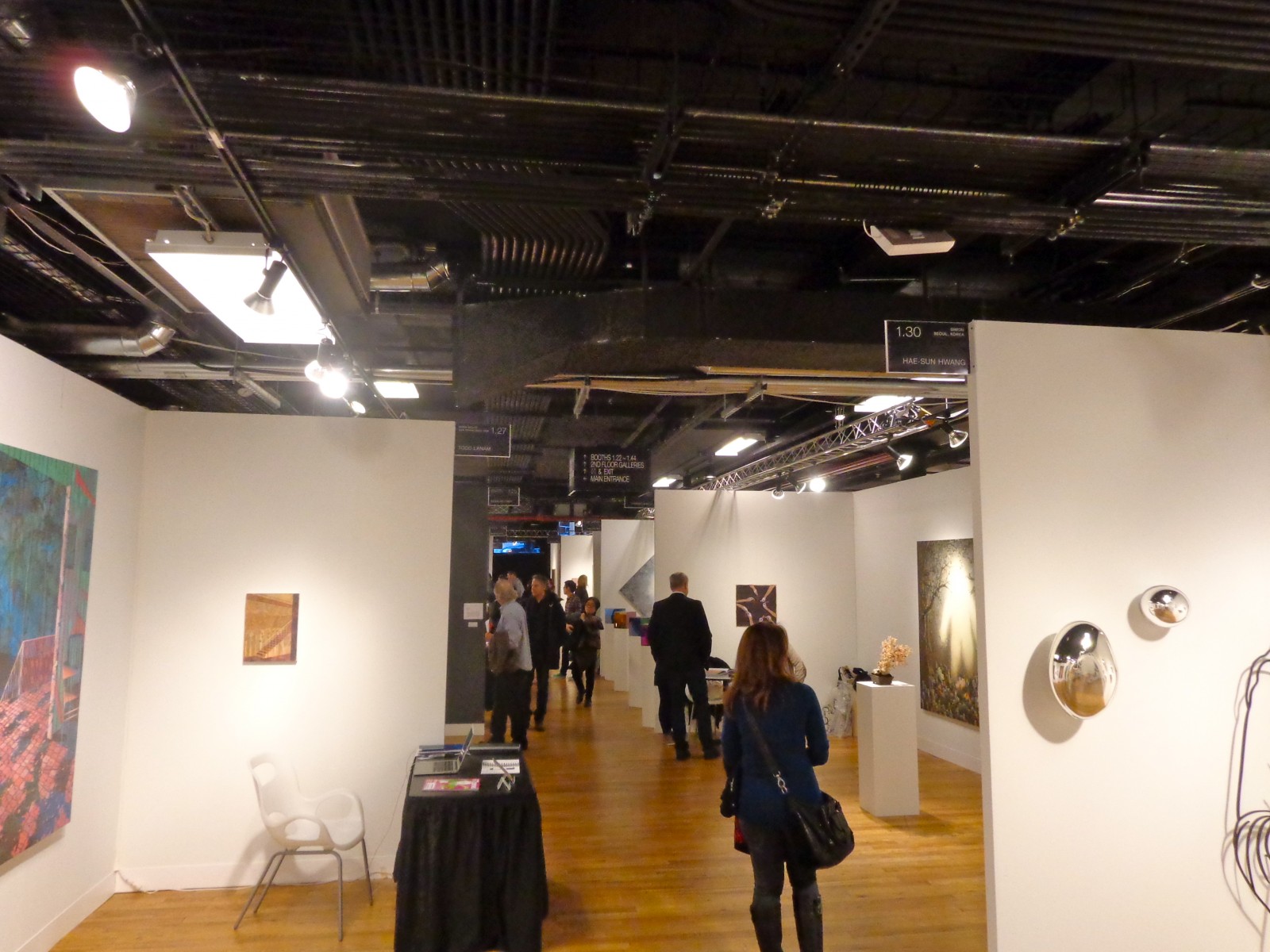
The SoHo area around VOLTA was busy the entire weekend, the whole city buzzing with art fair fever. And even though thousands of people walked through the same space in four days, it somehow still had a personal feel. Each booth was dedicated to one artist’s work so viewers were individually immersed in different artists’ styles as they walked from one white-walled booth to the next.
“People were already talking about it before we even opened,” said Amanda Coulson, VOLTA’s Artistic Director. “People were already talking about it before we even opened…and then the quality of the space itself, with the wooden floors and huge daylight windows, is just putting everybody in a fantastic mood. Along with the solo artist concept, which is now being picked up more strongly at all the major events, visitors are leaving with only enthusiastic comments. Suffice to say, we are extremely pleased.”
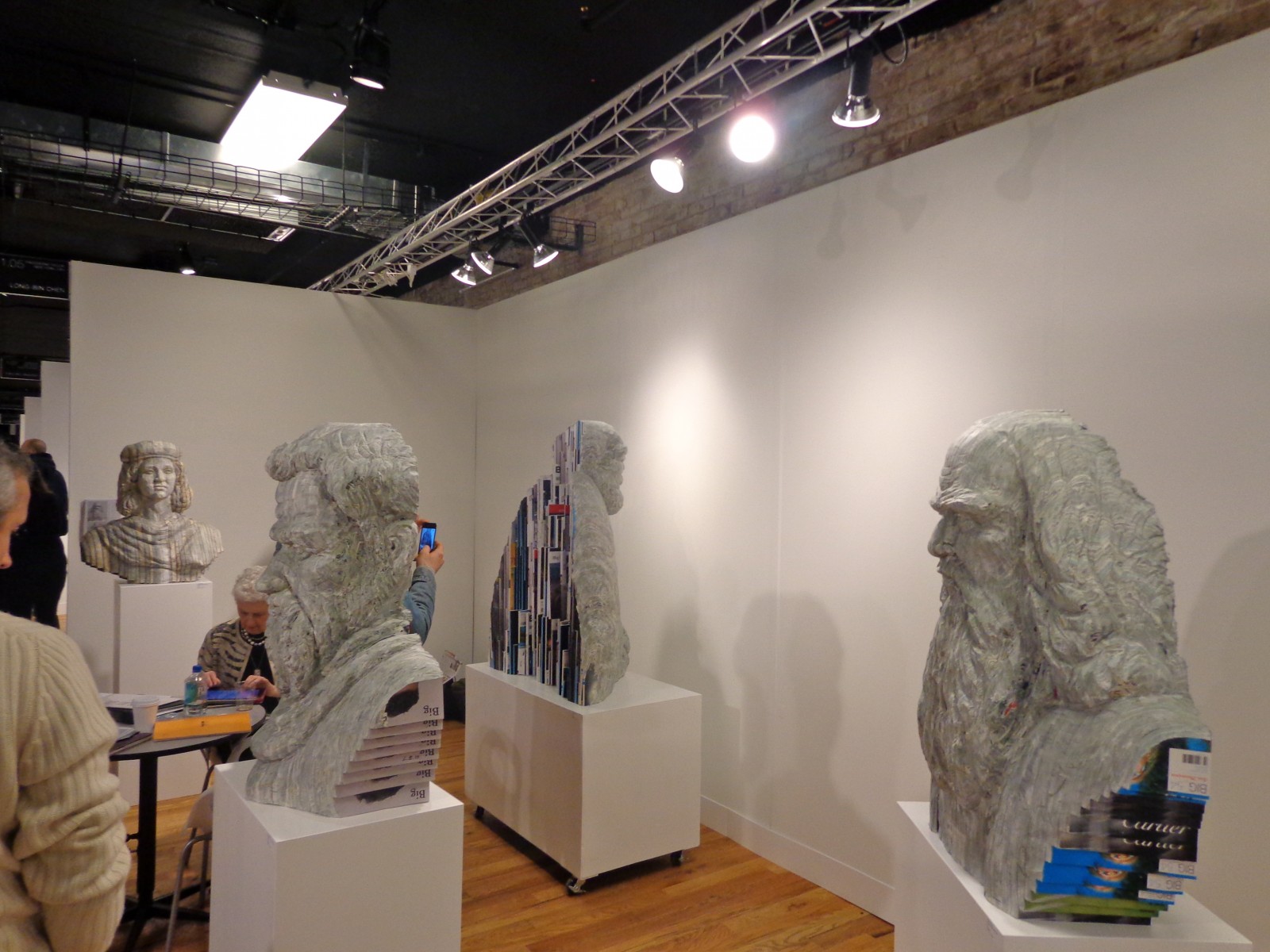
Long-bin Chen, represented by Frederieke Taylor Gallery

by Sarah Hardesty
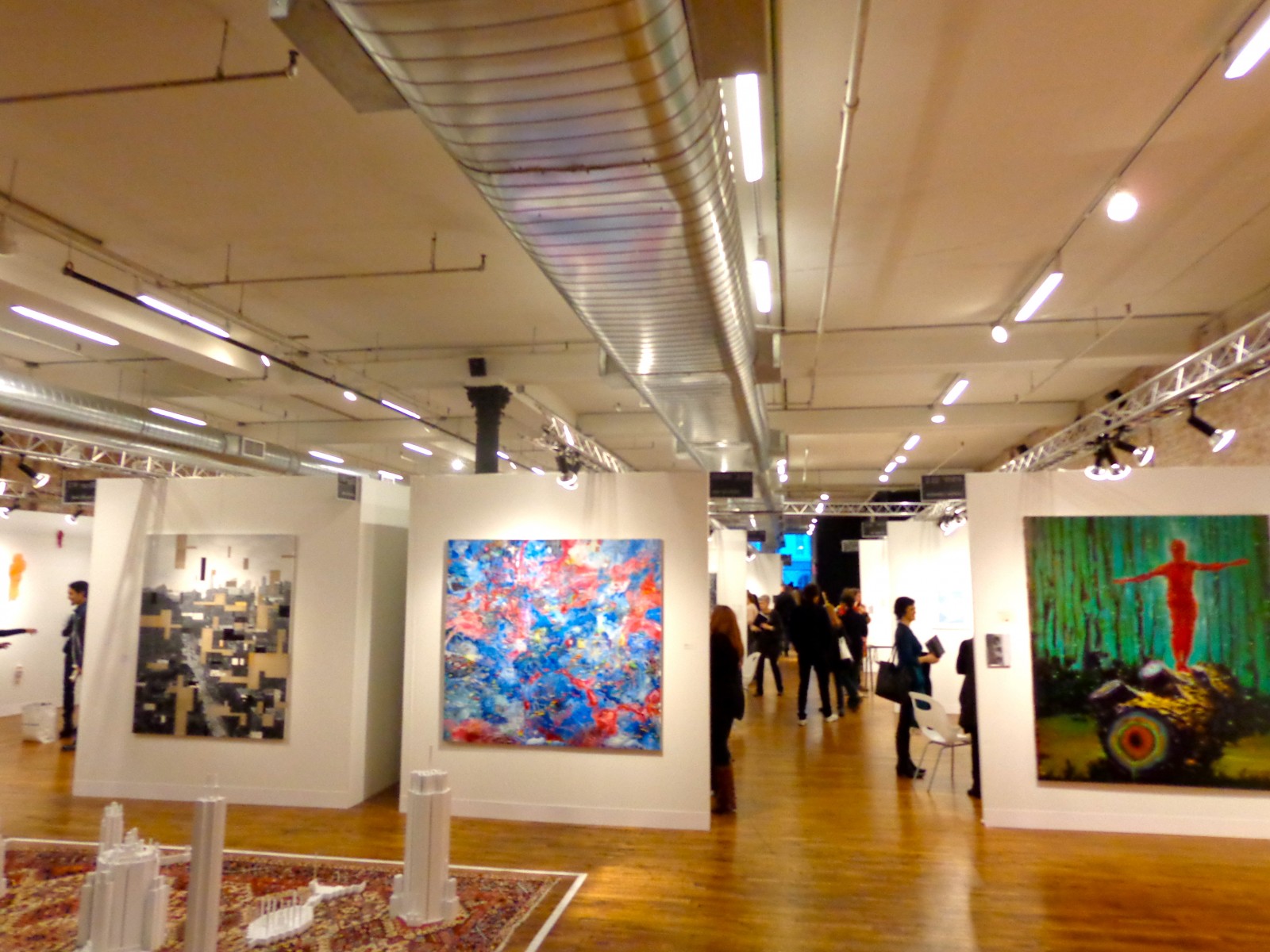
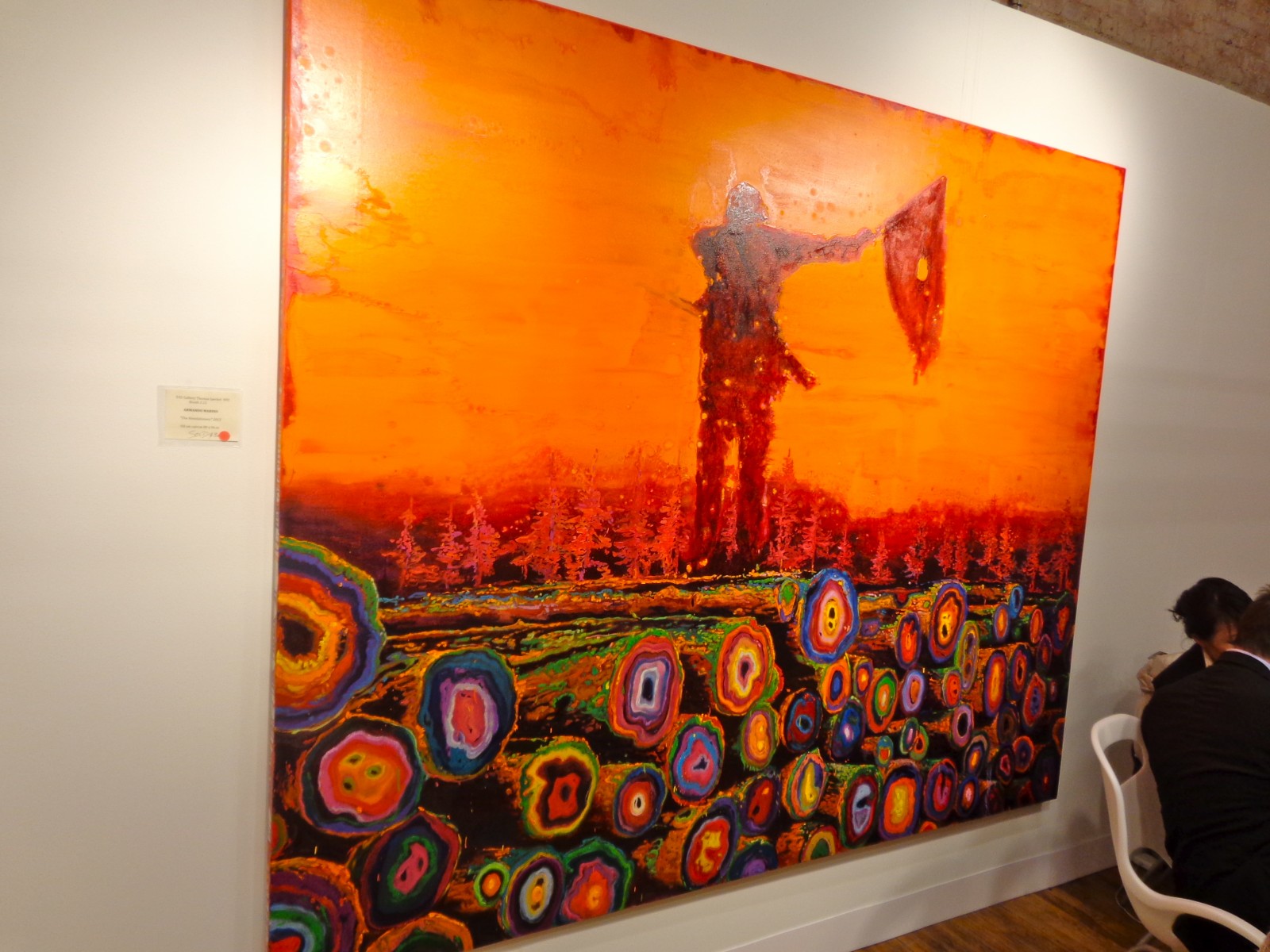
Armando Marino’s “The Revolutionary,” 2013
oil/paper
Represented by 532 Gallery T. Jaekel, NY.
A Flickr album for VOLTA is currently in the works, and expect a lot of future descriptions of the incredible work that was there.
See more of VOLTA on their website.
Mar 13, 2013 | art fairs, painting
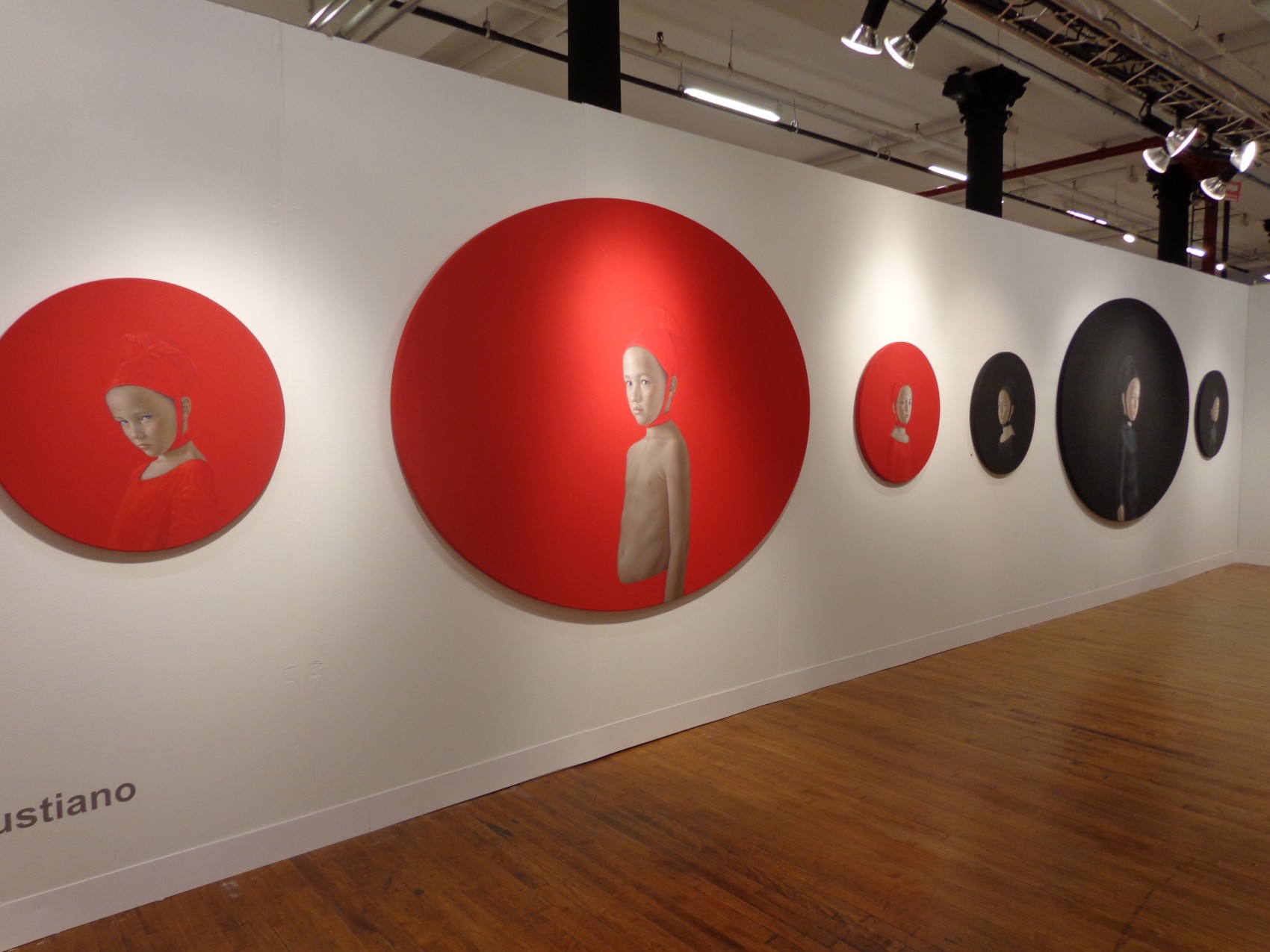
It’s arresting – seeing six symmetrical circles holding the faces of little scowling children, all spread across the wall, three red paired against three black. Cast in Renaissance clothing, these children wear the exact color of the background, making the definition between the two an act of magic. Your eyes tell you where the headdress stops and where her shirt begins, but they only know because of delicate shadows and folds that are obvious in some places, but left invisible where the painted fabric is as tight as the canvas.
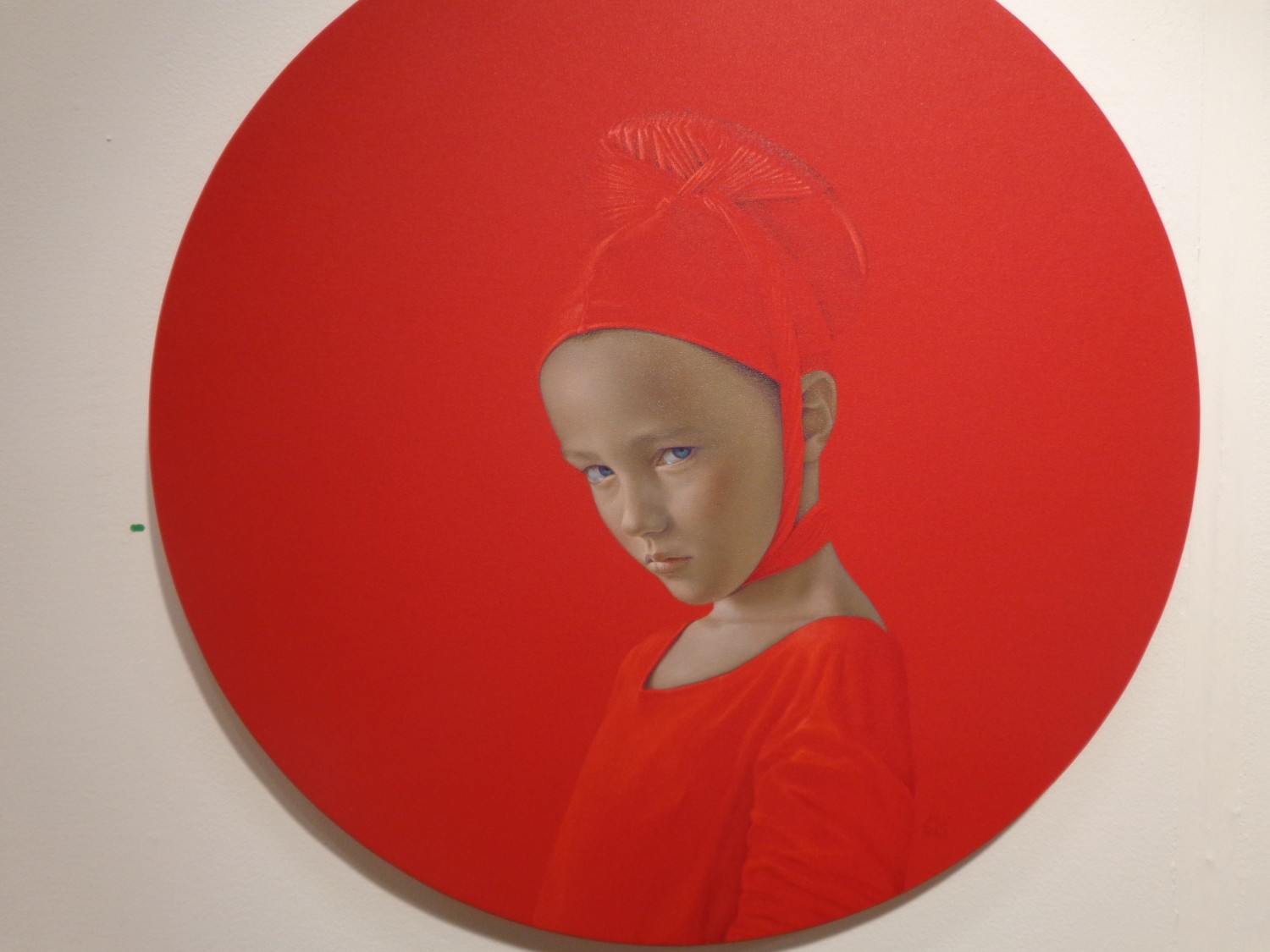
It’s hard to tell whether these are all the same little boy or girl – all of their faces have the same elegant roundness, the same crystal blue eyes and the same smooth perfect skin. But their expressions are subtly different – the four within the smaller circles seem to hold more contempt in their eyes, like they’re upset with how small their worlds are compared to the two children within the larger circles, whose expressions lie closer to curiosity or suspicion.
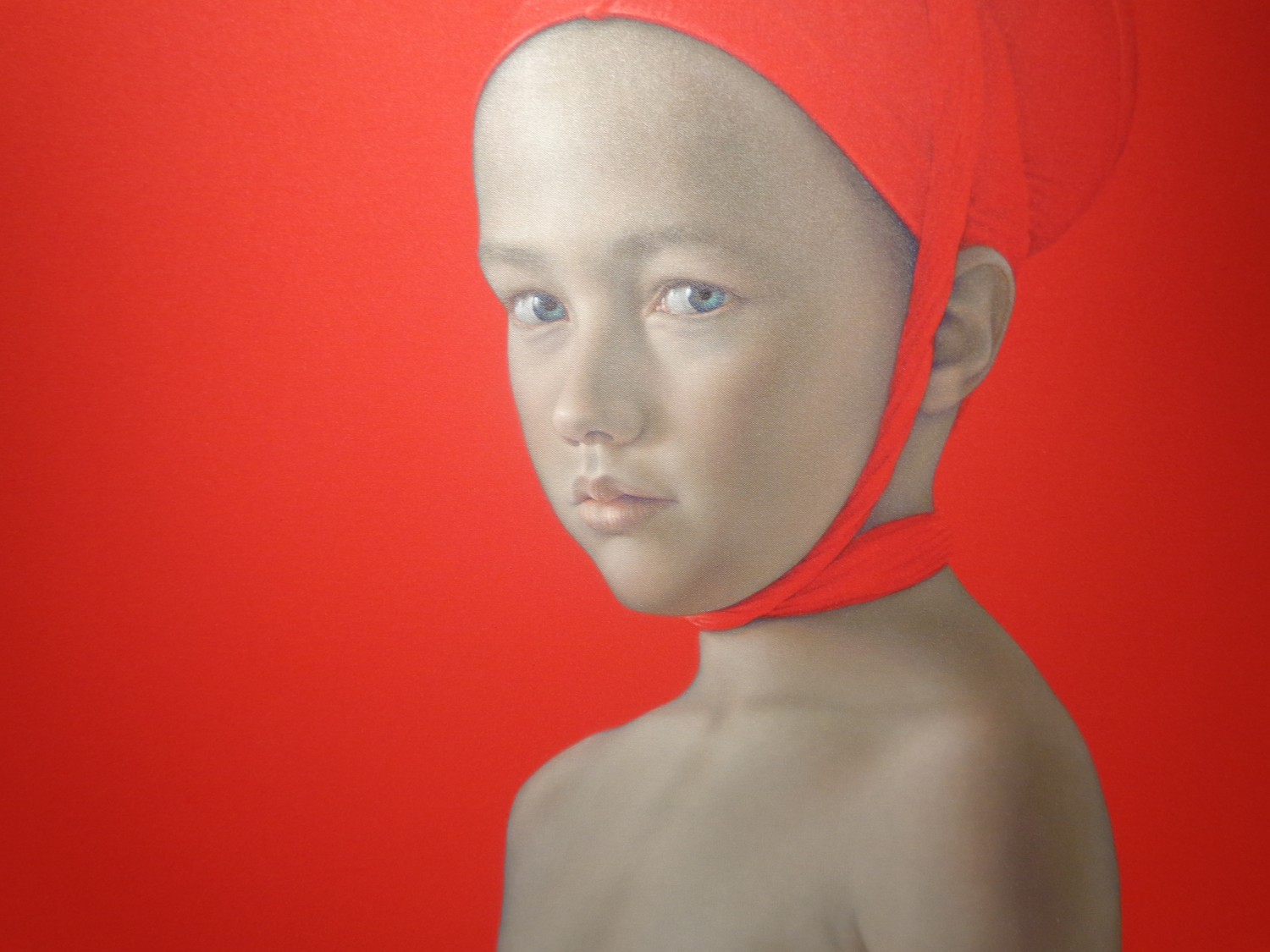
The only element offsetting perfect symmetry here comes in the clothing of these two children within the largest circles. The boy in red is bare-chested, wearing only a headdress while the child in the large black oval wears a shiny black shirt that grips his little body so tight he might as well not be wearing it at all.
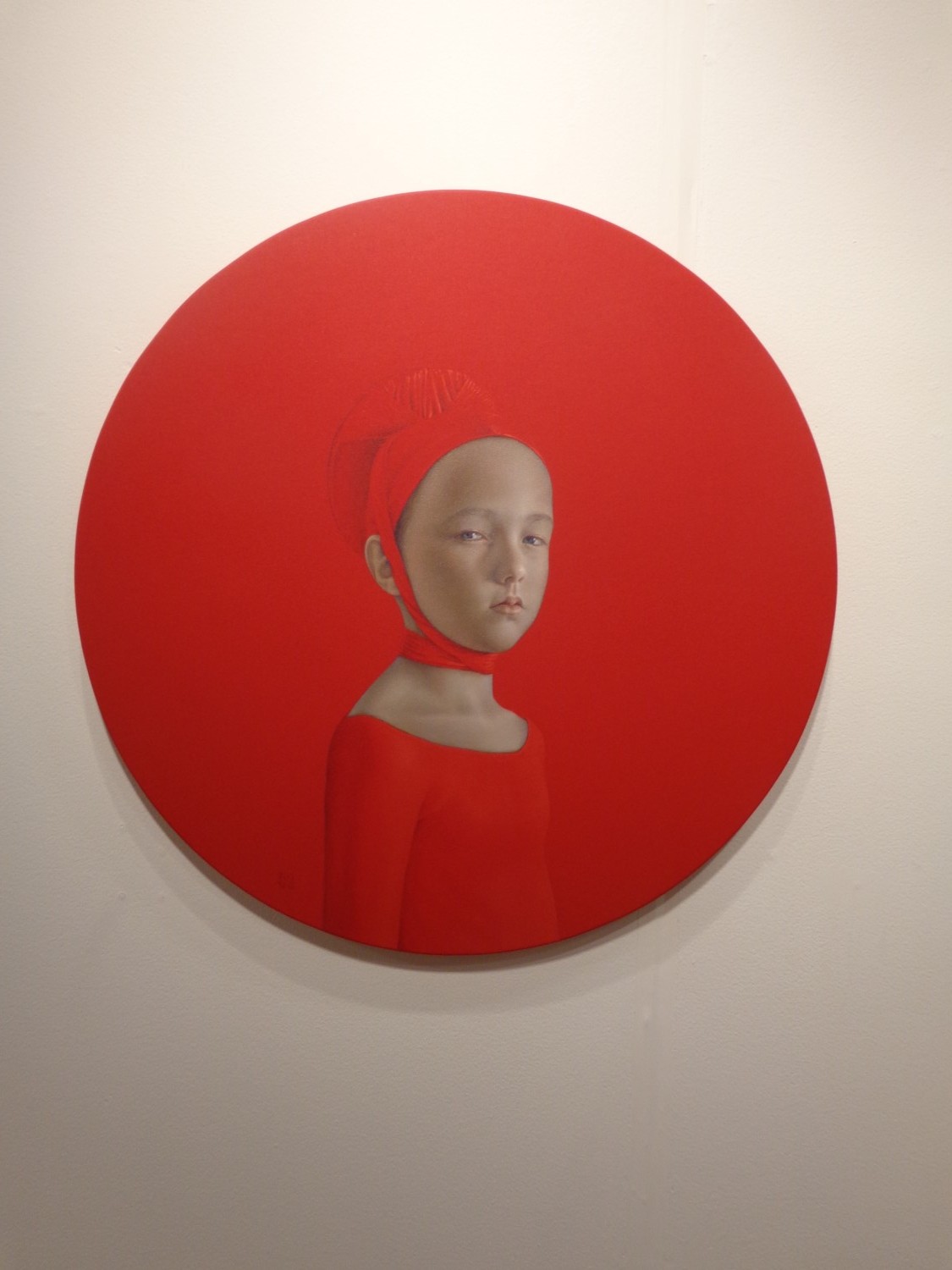
The largest circles are stretched wider to form more of an oval shape – the smaller perfect circles play a supporting role by framing their larger counterpart and interacting with the opposite color across the wall. The abrupt visual contrast of the black versus red, along with the dagger stares coming from intense perfect children makes the whole wall come alive with ideas about conflict and disdain, youth and maturity. And the Renaissance headdresses hint at an address of institutionalized religion or just religion as a whole.
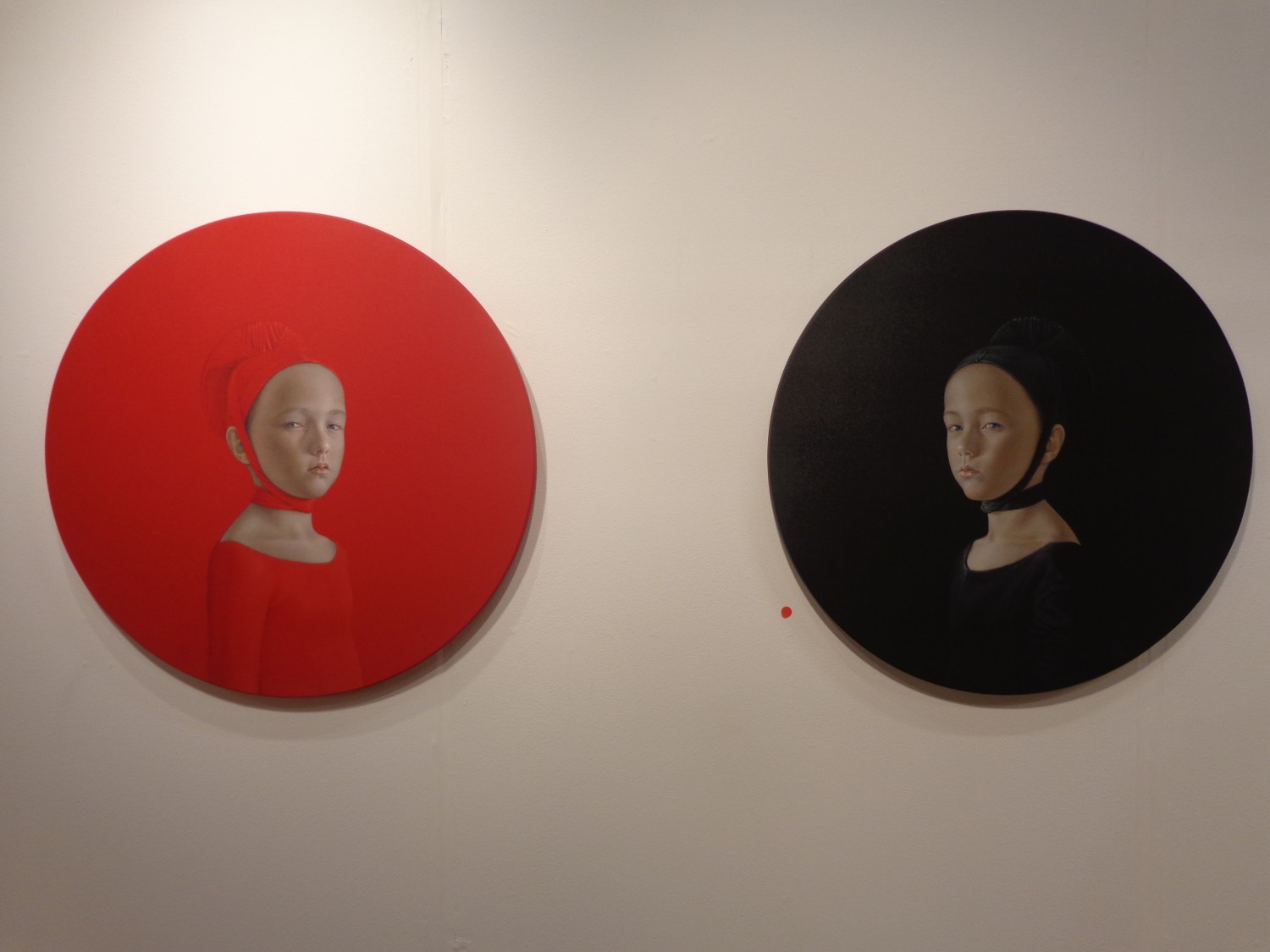
Perhaps the most dynamic part comes where the two colors meet – both children with the exact same grimacing glare pointed right at us, although it really seems like their unhappiness is actually rooted in their physical closeness to the antidote – the opposite color with a contrast too strong to look directly at.
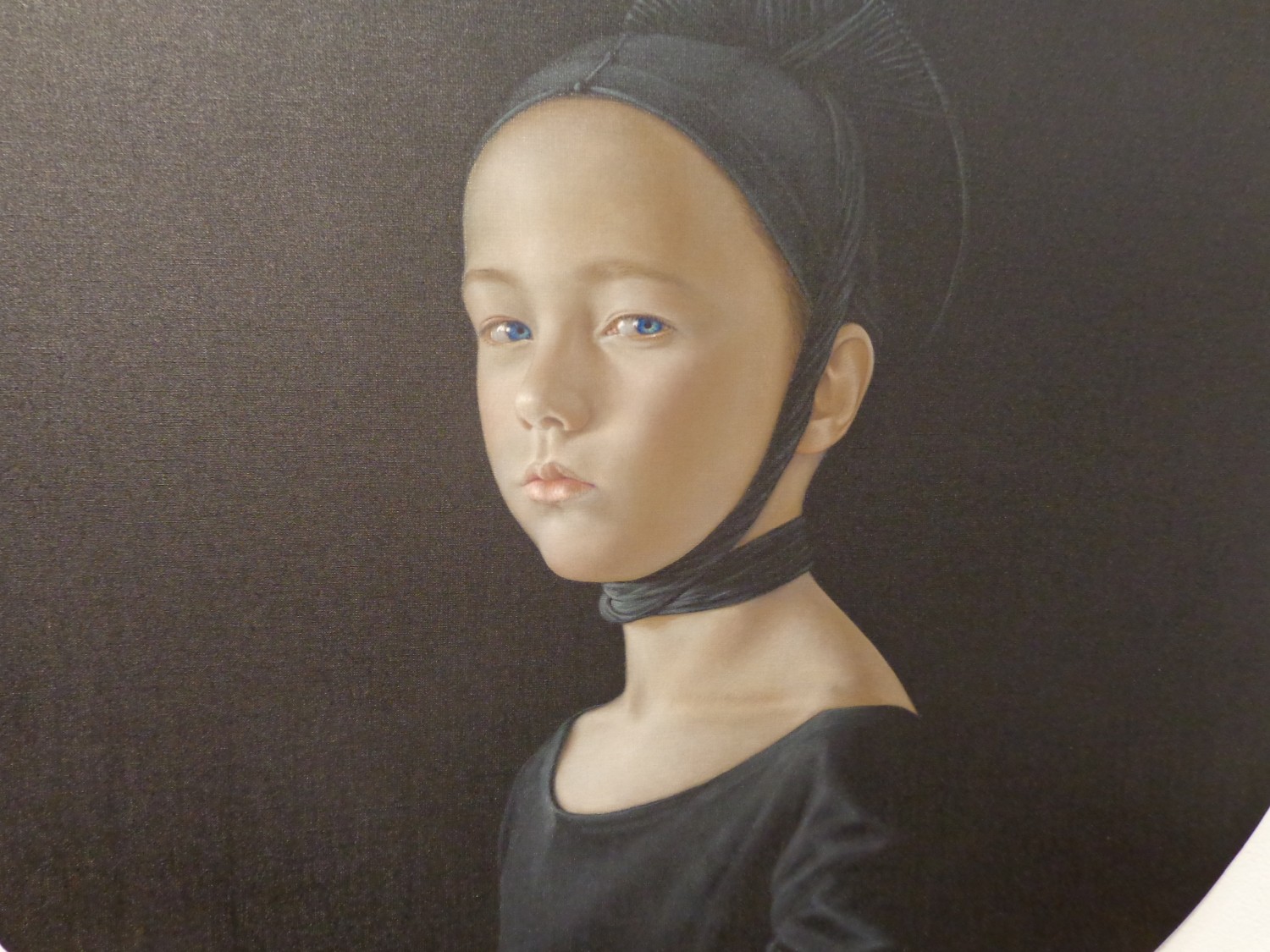
Born in Seville, Spain in 1965, Salustiano has an exhibition list too long for even multiple pages on his website. He’s shown between 10-20 exhibitions per year since 2001, and began all the way back in 1994. Beginning in Spain, then moving to Portugal in 1999, he showed in Italy in 2000 and New York City in 2001, and has since had work displayed all over the world, from Seoul to Salzburg to Moscow.
Salustiano’s VOLTA comment read:
“For me, emotion is a key word in contemporary art and should continue to be so in the future. In recent years in the art world, artists have tried to flee from ’emotion’: saturated with every kind of visual stimulus, they have been more concerned with making an ‘impact’ on the spectator than in touching an emotional fibre. I strongly believe that emotion should be the principal motivation and purpose of the artist. For centuries art has emotionally impacted upon, moved or even perturbed the spectator; and this ‘interior’ movement has contributed to the evolution of mankind. I also think that even if the artist intends to stimulate the intellect of his or her audience, then this should be done through ’emotion’….”
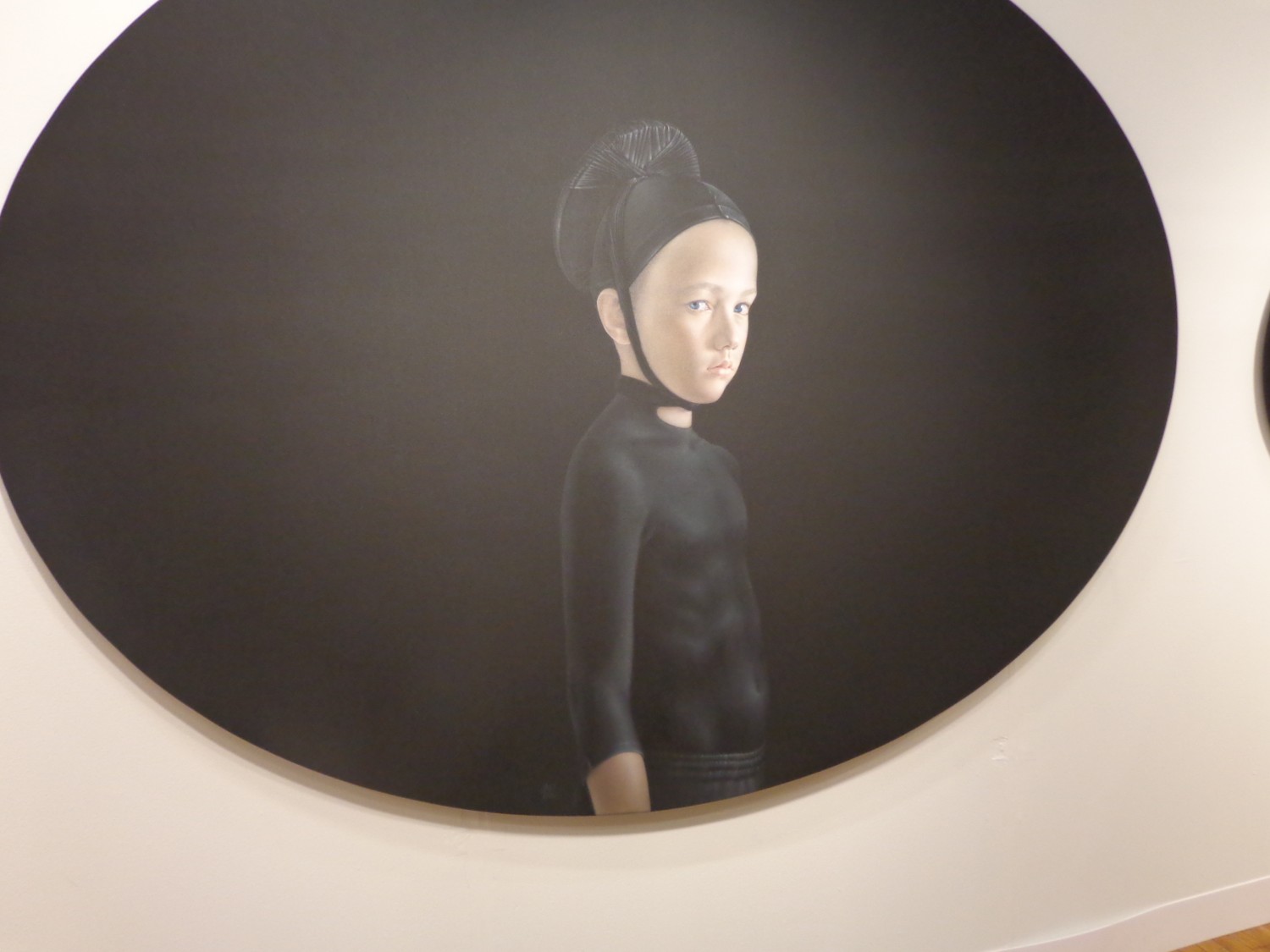
For more of Salustiano’s work, see his website.
All photographs taken by Lindsey @VOLTA NY ’13 where Salustiano was represented by KAVACHNINA CONTEMPORARY in Miami.




























